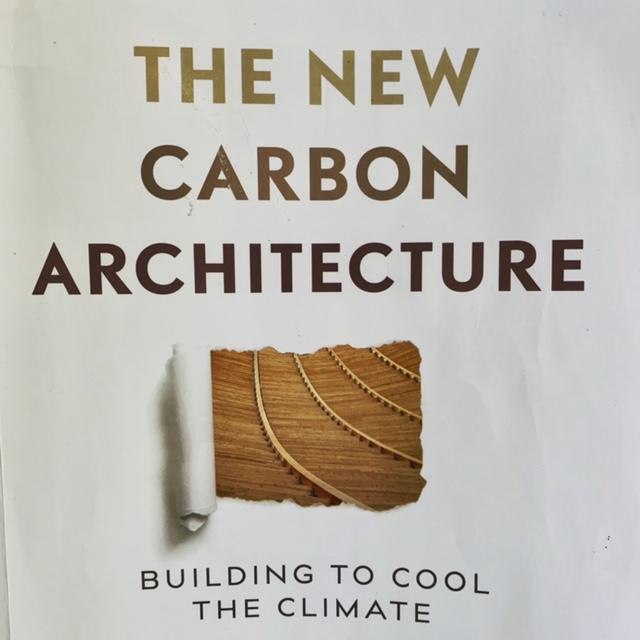
If there is one thing you can count on from Chris Briley and Phil Kaplan, it’s a good cocktail. The hosts of Green Architects’ Lounge didn’t disappoint when they joined the show on August 27th, and introduced us to the Paper Plane. “I used Braulio instead of Amaro Nonino,” Chris said, “but you could use almost any Italian Amaro. I also went with 1/2 oz. rather than 3/4 oz. of lemon juice, and added a dash or two of cranberry bitters that Phil made.” Yeah, that’s the kind of guys they are.
After toasts, the Maine-based architects launched into the night’s topic: “Siding Options With Sustainability in Mind.” They laid out the benefits and drawbacks of natural and treated woods, highlighting the importance of sourcing from either local or FSC-certified stock. Although wood is typically their first choice, they also regularly spec composites that include Hardie, Nichiha, Certainteed, and Viroc products, among others. They gave us their thoughts on vinyl, masonry, metal, and stucco, and shared a number of inspiring projects to depict those materials in use. They also discussed appropriate finishes, and pointed to a few specialty treatments including shou sugi ban. (Phil even got a plug in for his pet product: pine tar.)

Perhaps the biggest takeaway from the night was the chart they use to categorize the pros and cons of each material. The at-a-glance simplicity of it is helpful, educational, and—according to Emily—possibly marketable.
Weekly Newsletter
Get building science and energy efficiency advice, plus special offers, in your inbox.
If you’ve ever wondered about the ins and outs of choosing siding for a project, this discussion is for you.
Enjoy the show!
Join us on Thursday, September 3, from 6 to 7:30 pm, when Mason Lord shares a comprehensive look at Hudson Valley Preservation’s (HVP) latest ongoing project—a deep-energy retrofit of a 200-plus-year-old timber frame house in Washington Depot, CT. The primary goal is to make it a net-zero-energy home. Because of its age and condition a deep-energy retrofit was the only way to get there. Mason’s documentation of the construction stages and details make it an informative case study. He will share insights into how to keep an old house standing and performing at levels that reflect today’s green building landscape. His presentation promises to be a thought-provoking look at how time affects a home, and how to prepare it for the future. (See Mason’s bio below.)
Use this link to register for The BS* + Beer Show.
Mason founded HVP in 1991 with a vision of integrating assessment, design and building knowledge while maintaining close client relations and communication. After obtaining a degree from Duke University, he apprenticed as a restoration craftsman with the National Trust for Historic Preservation. His passion for quality construction and historic preservation has been critical for HVP’s award winning recognition along with his combined knowledge of architecture, engineering, traditional trades and history gained from nearly 40 years of experience with old and new buildings. Mason brings a unique approach to every project by acquiring a thorough understanding of the existing conditions of a structure and can visualize the future potential embodied within.
The BS* + Beer Book Club

Because the hosts of the BS* + Beer Show all love to read, we thought we would celebrate the authors in our industry by adding a book club to the show every few months. We’ll announce the book, give you a few months to get it and read it, if you haven’t already, and conclude with a BS* + Beer Show episode where we will invite the author to join us, present, and take questions.
The first book we’ll read is “The New Carbon Architecture” by Bruce King. Bruce will join us on the show on September 24.
Here’s a bit from Bruce’s publisher:
A tour de force by the leaders in the field, The New Carbon Architecture will fire the imagination of architects, engineers, builders, policy makers, and everyone else captivated by the possibility of architecture to heal the climate and produce safer, healthier, and more beautiful buildings.
I hope you will join us on September 24th as well.
__________________________________________________________________________
-You can contact Kiley Jacques at kjacques@taunton.com.
















One Comment
On pine tar:
https://en.wikipedia.org/wiki/Pine_tar
https://en.wikipedia.org/wiki/Turpentine
https://en.wikipedia.org/wiki/Creosote#Wood-tar_creosote
Being "natural" doesn't make these things safe; Everything is made of chemicals, and nature provides us with a lot of dangerous ones. The archetypal example we use when talking about that principle is "turpentine is all-natural". We've banned creosote (a term we typically apply to a specific distilled product of coal tar) in homes for its potentially carcinogenic impact. These chemicals are in an extended family of aromatic hydrocarbons (some of which are fairly toxic), and typically produced in a blend of different chemicals.
An inquiry should probably be made into what *specific product* is being marketed as "pine tar" in this context, what its precise range of chemical composition is. Certain products marketed as "pine tar" are used in veterinary treatments, shampoos, baseball performance enhancers, and a whole host of traditional remedies that date to before we understood much of anything about chemical health risks. It all got grandfathered in without safety evaluation, as older products tend to do in our system.
I find this on Bickmore Veterinary Pine Tar's product page:
"Does Pine Tar contain Creosote? We cannot guarantee that our Pine Tar is creosote free because creosote is an inherent part of the process of making pine tar."
And this from NIH on potential toxic risks and carcinogenicity of a highly refined pine tar product at 2% purity (still labelled 'pine tar') used topically: https://www.ncbi.nlm.nih.gov/pmc/articles/PMC5434829/
If pine tar was giving 10% of Viking longboat squads eventually-fatal cancer or birth defects, *they wouldn't have even noticed*.
These examples are all over the place, because there don't seem to be labeling standards (see: grandfathered in) to know exactly what you're buying, but it seems like a chemical evaluation is in order for any product you employ. This may be a negligible concern, or it may not be.
Log in or create an account to post a comment.
Sign up Log in